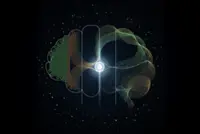AI can write poetry, but it struggles with math; AI’s math problem reflects how much the new technology is a break with computing’s past. — The New York Times
In the tech world, one class of learners stood out as a seeming enigma. They are hardworking, improving and remarkably articulate. But curiously, these learners – artificially intelligent chatbots – often struggle with maths.
Chatbots such as Open AI’s ChatGPT can write poetry, summarise books and answer questions, often with human-level fluency.





